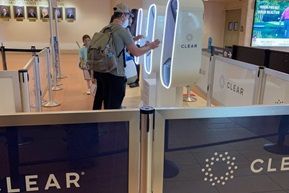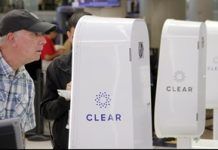Clear, the $189-a-year membership that allows enrolled travellers to cut to the front of airport security lines, is getting a technology upgrade in the new year—a change the company says will help facilitate “even faster, friction-free verifications.”
Starting in 2024, Clear biometric checkpoints will begin rolling out facial recognition software to replace their current (and occasionally clunky) iris and fingerprint scans. As of now, Clear users step up to the company’s kiosks outside of airport security to scan their selected biometric identifier in lieu of a physical ID check by a TSA agent. Members are then escorted to either the front of the normal security line or the TSA Precheck line, passing ahead of even those so-called “trusted travelers” for one of the speediest security experiences out there.
The hope is that by implementing facial recognition, travelers will move more seamlessly through the checkpoint and onto the security X-ray machines. “Our vision is to keep you moving from the time you enter the CLEAR lane and are greeted by an ambassador through a secure and seamless verification and entry into physical screening by TSA,” the company statement says.
Although the process will be more streamlined, it won’t be entirely automated—members will still need assistance from the Clear attendants, who will guide them through the lane. “Our ambassadors are a crucial piece of both security and hospitality,” Clear’s statement says. “They will continue to be in the CLEAR lanes as we roll out this new technology to ensure the most secure and seamless experience for our members.”
As part of the new process, Clear airport representatives will scan members’ boarding passes with a handheld tablet at the entrance to the Clear lane. Members will then proceed through the lane, pausing briefly in front of a facial recognition screen. After the facial scan, travelers continue to the end of the lane where the Clear attendant verifies their identity with a TSA agent, and they’re allowed to pass into the security area.








